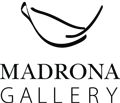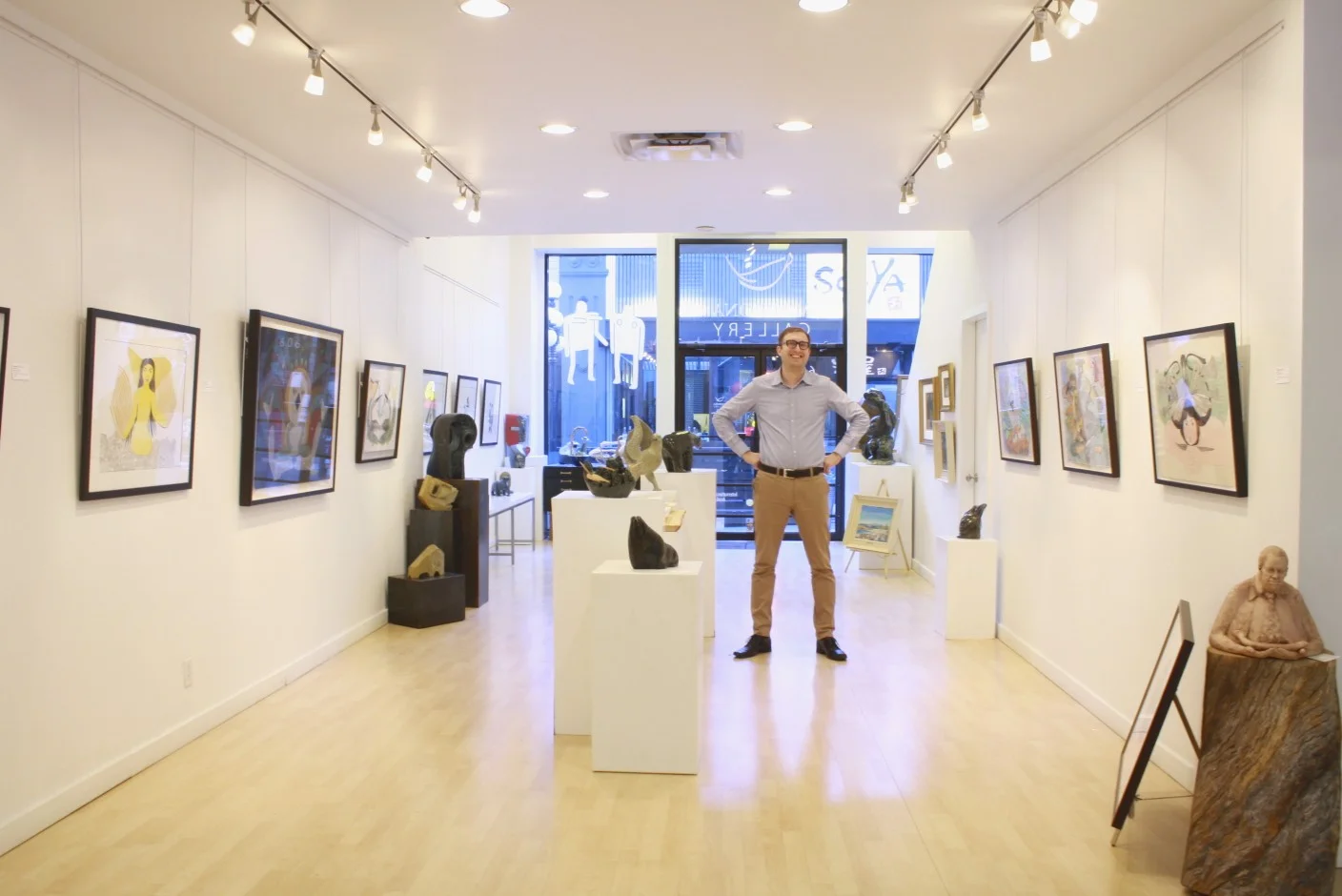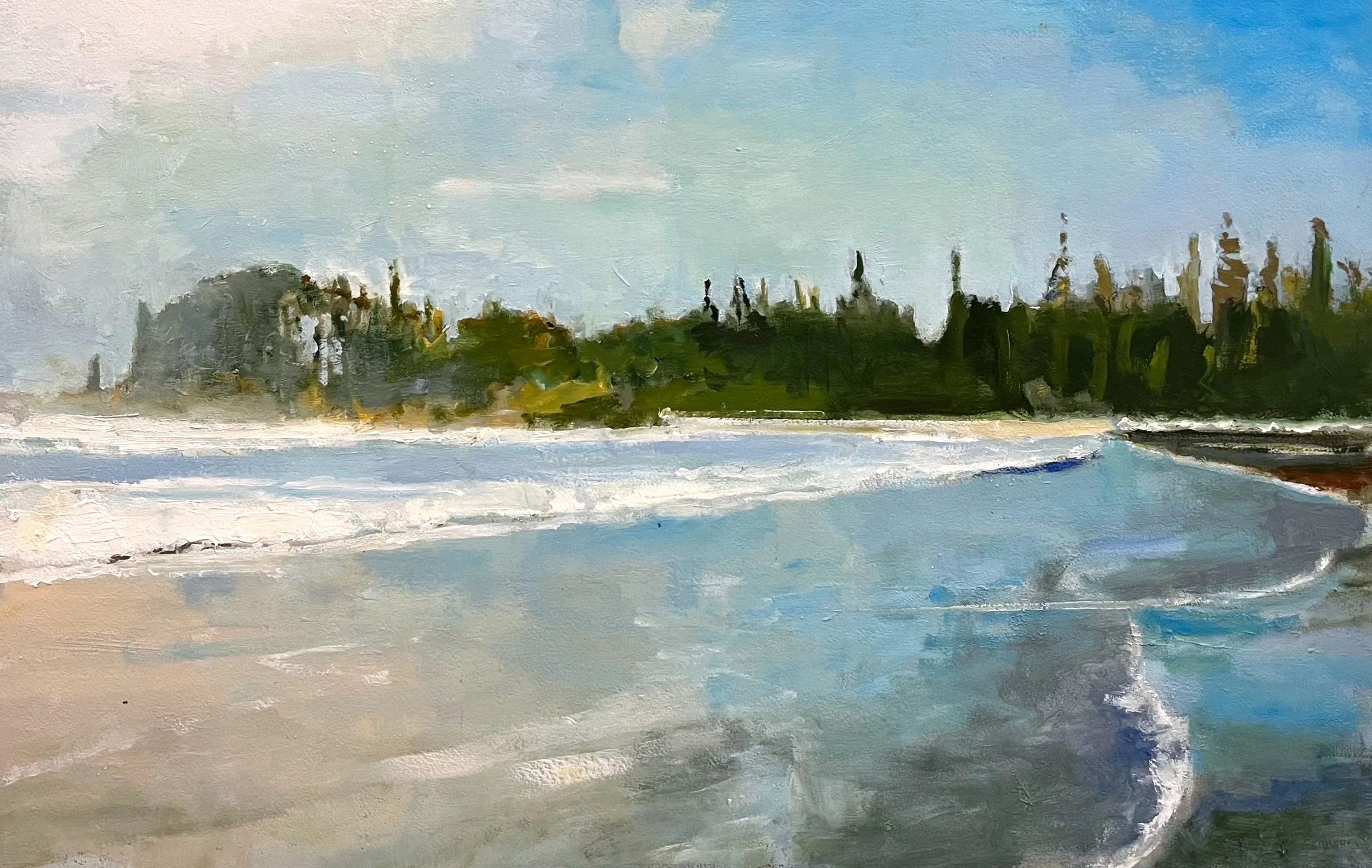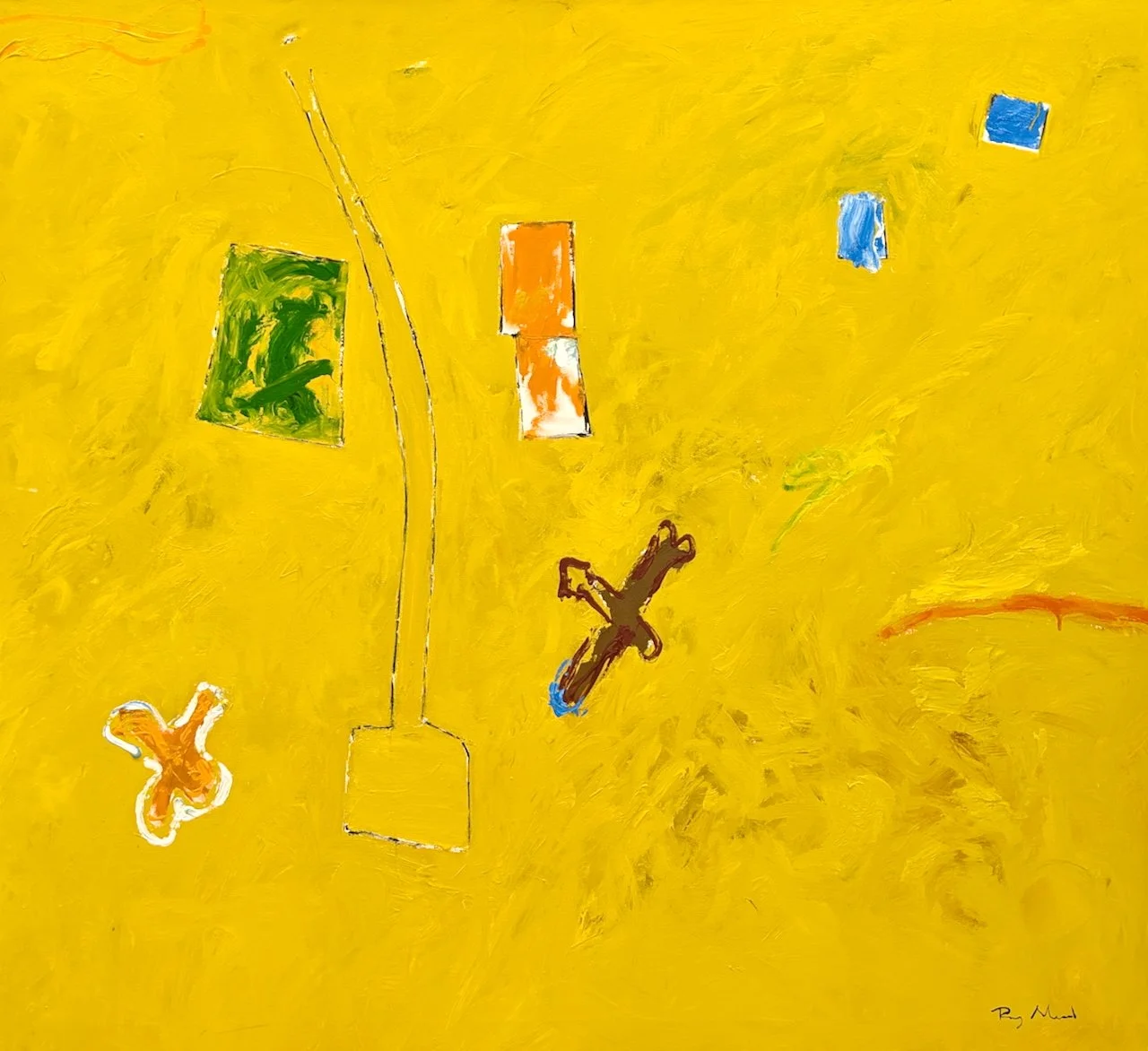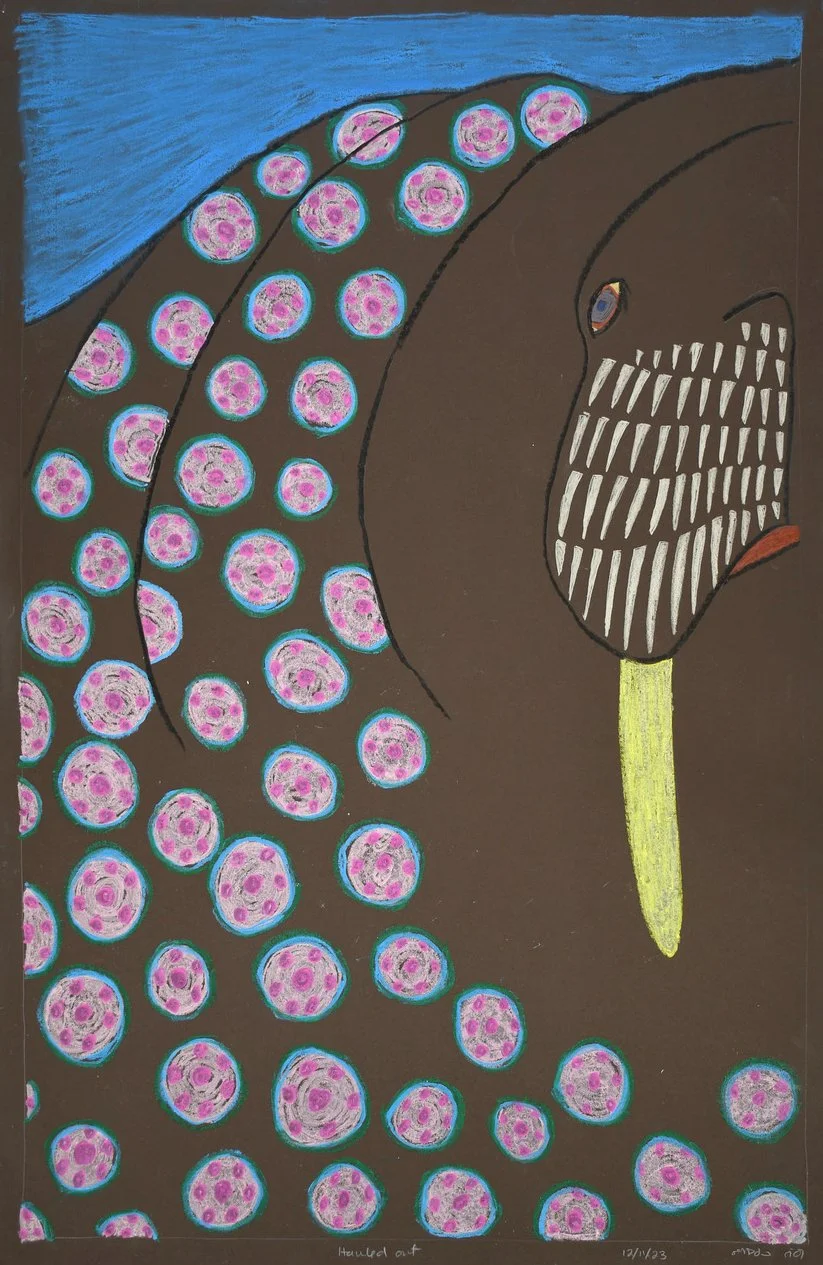The Art of Scott Amos: Interactivity and Collaboration
/I was thrilled when Scott Amos (artist, filmmaker, general mad scientist) agreed to be my first artist interview for the blog. He is, in my humble opinion, one of the most exciting and innovative artists currently working in Victoria (a city with a plethora of exciting and innovative artists). He's collaborated on interactive pieces for Phillips Brewery, Rifflandia/Kidlandia, The Victoria Film Festival and TedX Victoria. Scott’s ability to create art that invites the user to engage in and interact with the pieces using repurposed parts from discarded mechanical and electrical equipment puts him on the cutting edge of what museums and galleries are looking for when they’re trying to improve the ‘visitor experience’. His art is not static, it is ever changing and evolving with each new user.
I met with him at Phillips Brewery to take some photos with and chat about one of his and David Parfit's (his partner in creation and crime at Monkey C Interactive) most well-known creations, the Philliphone, an 1889 Chicago Cottage Pump Organ that was modified to play beer bottles with various electrical and mechanical controls I couldn’t even begin to understand. It was a big hit at 2013 Rifflandia and still is, judging by the crowds of people interacting with it as we waited for an opportunity to snap some pictures.
Your pieces are a wonderful mix of mechanics, electronics, interactivity and art which is not something you see much of in the art world. How did you get into this niche?
I used to (and still do) love taking apart electronics. Circuit boards are like component landscapes with intricate patterns and designs. Others are like aerial views with crazy-complex networks and patterns. I find machinery fascinating. I'm not sure what it is exactly, precision, simplicity, elegance, but I can get lost in it. The next part is play which somehow is the opposite of work in our society. Work is valued and hard work is rewarded. Play? Not so much. As a culture, for the most part, I think we've bought into the idea that work is a struggle and play is our reward for that. Maybe we need to reconsider our relationship with play.
Your pieces, like this Philliphone or the Registroid (at exhibit at TedX Victoria), include a lot of reclaimed machines and electronics. When you start a piece are you inspired by what you find or do you have an idea and hunt out the parts to make it work? IE, what comes first the chicken or the egg?
The Philliphone was inspired by an installation I saw in Austin, Texas. It was a wall of singing bowls that were struck by mallets. It played an ambient soundtrack and had a few arcade-style buttons you could press to switch up the song it was playing.
The Registroid was conceived after I saw a vintage cash register at a thrift store. I wanted to do something with it but I wasn't sure what. All I knew was that I wanted to take this weapon of commerce and disarm it. Also, because it's from the late 30's, early 40's, it was built very robustly. Starting with something super-sturdy is always a good idea with interactive art because people are ruthless. If given the opportunity, people will break everything.
Can you tell me about the process of the Philliphone and working with Phillip’s Brewery from its idea to its creation?
Matt Phillips is amazing. He's super-supportive of artists. We just sent an email to the brewery one day saying that we wanted to make a beer-bottle-organ and asked if he would be interested in working with us. He called us in for a meeting the next week and asked if we were serious, if we could actually do it, and how we could work together to make it happen.
All of your pieces involve collaboration, whether it’s with David at Monkey C Interactive, with Limbic Media or with Oilyfilms. What is it that draws you to work on collaborative projects?
Partially it's necessity, I don't have the skills to do everything involved in producing these works. There are a tonne of people out there that are much smarter than I am, and thankfully, I've befriended some of them. Beyond that, it's nice to have input, to bounce ideas around with people. There's a myth of the artist as this misunderstood, independent, tortured individual. I'm sure some artists are like that but I don't think that's always the case. With group work, when everything lines up, the whole is greater than the sum of the parts.
After we finished at Phillips Brewery he kindly allowed me to join him back at the studio he shares with David Parfit so I could get the feel for their process. He warns me it’s a mess. I tell him I expect nothing less and in fact hope it lives up to my notion of him as a mad scientist. It does not disappoint. The space is crammed full of old machines, wires, controls and other things that I have no idea what they are. He points out a few pieces he and David are working on for the Victoria Film Fest 2015 including an “old video theramin thing” (yet to be named). He has an energy about him as he talks about his art that, like his creations, you get the impression his wheels are always spinning.
Your pieces always include audience participation and interactivity. Can you tell me about why that is important to you?
I started off making films and I think films can be enlightening and entertaining. They can be very powerful. It is how films are shown that I’m not quite sold on. It's one of the few places where you gather a group of people, make them all face the same way and share an experience. We encourage them to keep quiet, until the lights come on, and then whisk them out the door. I feel like it's a missed opportunity, to have that many people together in a space to share in something, but not connect with each other.
You are a partner in OilyFilms as well as Monkey C Interactive, can you tell me about how you first started working in film? Can you tell me about the relationship between your films and interactive sculptures for you?
I broke my leg when I was 25 and attending UVic's Writing Department. Since I couldn't work that summer I had to take some classes to be able to get a student loan to pay my rent. The only classes that the writing department offered during the summer were a video production class and a film studies class, so I signed up. The first thing I did was make a really terrible movie, just awful, but I loved the process. Film made me look at the world different, there were new toys to play with and new ways to explore, so kept at it.
When I went to Grad school for video production, I ended up taking a class about micro-controllers with Steve Gibson and Justin Love, and again, the world sort of opened up with new things to explore and play with.
You’ve described yourself as a big kid playing with toys. Is having fun while creating an important part of your process?
Always, it all starts with childlike curiosity and a few "I wonder what would happen ifs'." Parfit and I always joke about knowing that a piece is done when we get caught up in playing with it. But I guess it's not a joke but rather that we make them to amuse ourselves. If what we create manages to amuse ourselves, then hopefully it will amuse other people too.
As a gallerist I have to think about the consumability of art. Do you find that there are challenges in creating art that is not necessarily meant for a commercial market?
I guess the big question is: how do you monetize experience? With what I do it's hard to think about consumability without taking the arcade-game route and making people pump tokens into the machines to make them work. There are some grants out there and some production funds for different festivals, so we cobble together bits from here and there.
Knowing Scott was giving an artist talk that evening at MediaNet on his short experimental films and found footage I leave him to his work inspired by his passion for what he does and the humble nature with which he presents his work.
You can check out Monkey C Interactive's latest works at an interactive art show, Scena Ex Machina, made up of four "mutant machines" inspired by science fiction films and sponsored by the Victoria Film Fest taking place in the Bay Centre starting tomorrow, February 7 until February 15.
Interview by: Theresa McFarland
